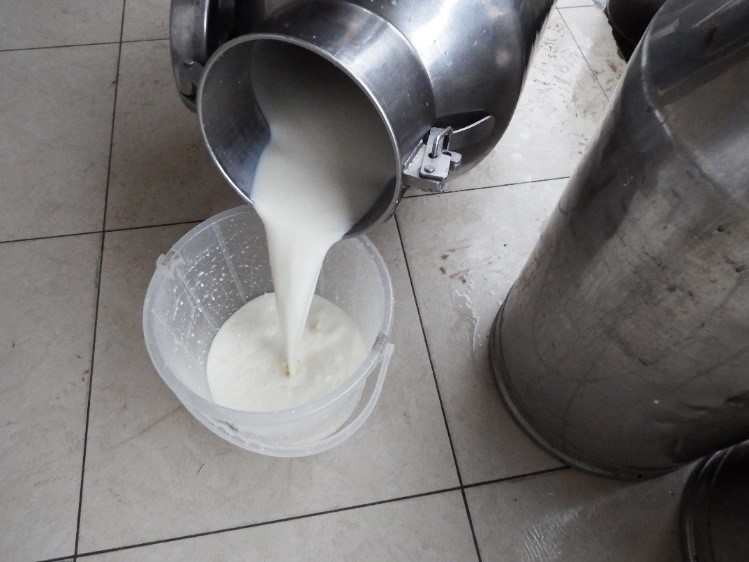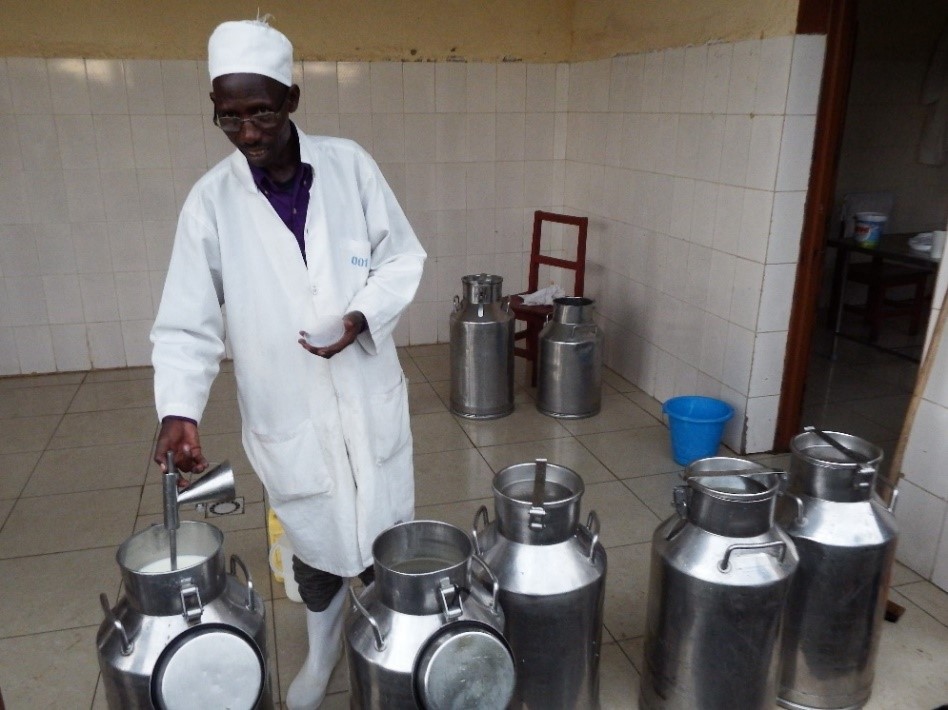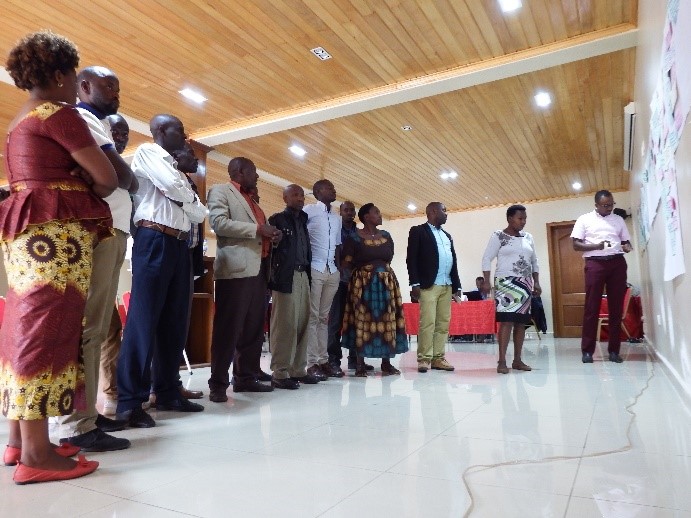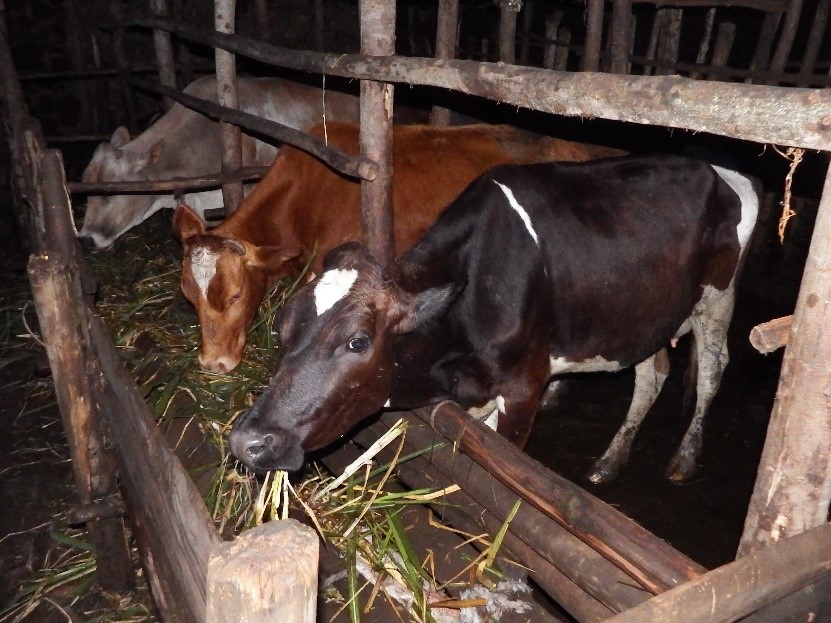
Meaningful meetings mean more milk
“Burera dairy opened in September 2015 but immediately had problems in sourcing milk as there was no organized supply chain” explains Managing Director Emmanuel Mahoro. “But things improved when everyone involved began to meet.” Beginning in November 2016 with a capacity needs assessment workshop, CDAIS has helped to bring different actors and interests together, followed by more meetings and coaching sessions. And in September 2018, a first reflection meeting assessed the achievements and remaining challenges, but also identified that benefits went far beyond just the dairy…

In Burera, farmers kept cattle for the sale of calves, cows and manure. But few produced milk because they had no market. The government responded by investing in a community milk processing centre, now Burera Dairy Ltd. in Cyanika to stimulate demand. But from the outset in 2015 the dairy could not operate because there was no organised supply chain. Other challenges included traders paying farmers late for milk collected, lack of transport, no access to credit, and no functioning community collection centres. But thanks to the commitment of the Burera District -Agriculture office, with CDAIS support, things soon changed…
“The District office in partnership with CDAIS has achieved much by bringing the different actors together. And since the first meeting in October 2016, you see the changes now.” Jean de Dieu Nizeyimbabazi, Burera District Director of Agriculture and Natural Resources.
Early progress, 2016-17
With CDAIS, the newly created partnership learnt not only how to identify problems in partnership, but also to prioritize them. “During the capacity needs assessment in 2016, we came up with doable actions plans” said Jean de Dieu Nizeyimbabazi, Burera District Director of Agriculture and Natural Resources at a meeting in June 2017. “Actors now understand the challenges, and the partnership makes it easier for them to make improvements, with awareness of community needs and challenges also shared through this platform.” Before CDAIS there was little discussion, and the Burera dairy partnership realized that the only way to achieve their aims was to collaborate, share and support each other. Demand for the centre’s milk increased, also helped by getting the ‘RSB quality’ mark (Rwanda Standards Board), resulting in new markets.


“We have seen many changes for the better. Now we are all milk producers, thanks to the community milk collection centres.” Aloys Hakuzimana, president of the Union of Burera livestock producer cooperatives (IABU).
Building on successes – fast forward to 2018
“We have doubled production in a little over a year, buying 1500 litres per day, and aim to hit our capacity of 2100 litres in the coming months,” said Burera dairy Managing Director Emmanuel Mahoro. “We buy from the CEPTL cooperative milk collection centre next door to the dairy, that in turn buys from 1035 individual farmers via six community collection centres, paying the government-set price of RWF200 (US$0.23) per litre. Each centre has its own milk cooler, but as some are up to 20 km away, transport is an issue. Since May 2018 I have also attended several CDAIS training courses, the most interesting for me being on advocacy and access to markets.”

But benefits go beyond the dairy
And while changes in Burera dairy are impressive, they are small compared to the impacts elsewhere. The demand stimulated by the dairy, strong government support, and new partnerships promoted by CDAIS has led to a massive increase in supply of quality milk. “See how production has increased” says James Ndaruhutse, Burera livestock officer for the Rwanda Agriculture Board (RAB). “In 2016 there was only one community milk collection centre with a small output, and now there are six, producing in total, an average of 10,300 litres per day.” But although the Burera dairy can only absorb a fraction of this, there is a ready market in the larger towns and especially in Kigali, for quality milk. And the maths is self-evident. An increase in production of some 10,000 litres at RWF200 per litres makes RWF 2 million (US$2300) per day, or an additional $70,000 per month now going into the pockets of farmers in the area.
And there are other knock-on benefits. “Before training I would buy milk from anyone but now I understand the added value of quality” said Thacienne Umutoniwase, a milk retailer from Gahunga. “I then started to buy only from the collection centres and as people saw that the quality was guaranteed I got more customers and now sell twice the amount of milk than before.” Thadee Ngwizabahizi also explained his own transformation in starting a new business. “I started with CDAIS in 2016 as a member of a milk collection centre, but after training on entrepreneurship, record keeping and access to markets, I helped start a milk transporters cooperative using what I learnt. We now employ two full time staff and plan to invest in motorbikes instead of bicycles to reduce transport”.

“CDAIS has taught us how to approach markets, and thanks to this, I see our cooperative becoming more competitive and increasing production of higher quality milk products in the years to come.” Pierre Celestine Mbonaruza, president of the CEPTL cooperative & milk collection centre, Cyanika, Burera
Looking backwards, and forward – “We all jump together”
At a meeting on 10 September 2018, diverse stakeholder groups evaluated what has been learnt over the past two years. It included representatives of milk producers’ associations, community milk collection centres, Burera dairy, milk transporters, retailers, consumers, a local bank, the district government, and the Rwanda Agricultural Board. Of the capacity building coaching modules, the most beneficial were noted by all as those on entrepreneurship and business skills, standards for improved businesses, and advocacy. And participants presented all the benefits and changes that the new knowledge and skills gained had made on how they think and what they do on a day-to-day basis, summed up by Jean de Dieu Nizeyimbabazi who has been involved since the beginning. “The project helped to group to discuss their problems, their needs, and roles, responsibilities and strategies required to make things better – and everyone became actively involved.” And James Ndaruhutse of Rwanda Agriculture Board concluded, “With this reflection workshop we have refreshed our minds on the new knowledge we have gained.”
Into the future, there was also a desire to have further coaching on those areas identified above as being of most relevance to all actors, and on cooperative management and business plan development. There was strong agreement to establish a multi-stakeholder partnership that will continue under its own initiative, and this should also include other big milk buyers such as those from Kigali. And country project manager Gilbert Kayitare concluded that the next step in this direction would be the organization of a policy dialogue including national and local government and other stakeholders, that could provide the foundation for a self-sustaining future platform.

Bringing the banks onboard
Any agricultural innovation requires finance, and the role of banks is crucial. Aimable Niyomzima, local branch manager for Banque Populaire Rwanda explains. We offer loans as low as RWF 500,000 (US$575) to farmers – enough to buy a cow. And we can offer larger loans to farmers or cooperatives, but previously they didn’t know how to keep records or manage a project. But in the year since I started with CDAIS there have been many changes. Meeting with farmers I began to see their issues and needs, and they also started understanding that we at the bank need to see files, figures and a business plan. And CDAIS training is also helping. We are moving forward.”

Community collection centres must have a milk cooler, the smallest starting at RWF 7 million (US$8000). But even without bank loans, farmers were so keen to get involved in the new milk trade that they accepted alternative sources of finance. As Jean de Dieu explains, “Without bank loans, some made agreements with buyers from Kigali who would pay for a cooler, which the collection centre would repay in instalments, or by accepting to receive less per litre, though terms are not always in the cooperatives’ best interests.”
“With CDAIS, I learnt that for an improved and well-functioning milk value chain, we must build managerial ‘soft’ skills.” Jean de Dieu Nizeyimbabazi, Burera district director of the Agriculture and Natural Resources.

Beyond CDAIS – what next?
All this has showed that benefits in this case were far greater than what was intended, and stimulated milk production far in excess of what the dairy could use, so new markets were found. Then there are other knock-on benefits such as for transporters, retailers and consumers who now have better quality milk products. But crucially, it is clear that such impacts were only possible with the availability of finance, committed people and partnerships.
Into the future? “After the CDAIS project finishes,” James Ndaruhutse of the Rwanda Agriculture Board (RAB) “I think that the partnership will continue. The farmers need it, and we support them.” Jean de Dieu concurs. “We have the commitment from CDAIS who will organise a national dialogue in the coming months. And from this, we can agree on the structure and functionality of the platform that we will carry these successes and multiply them in the years to come.”
